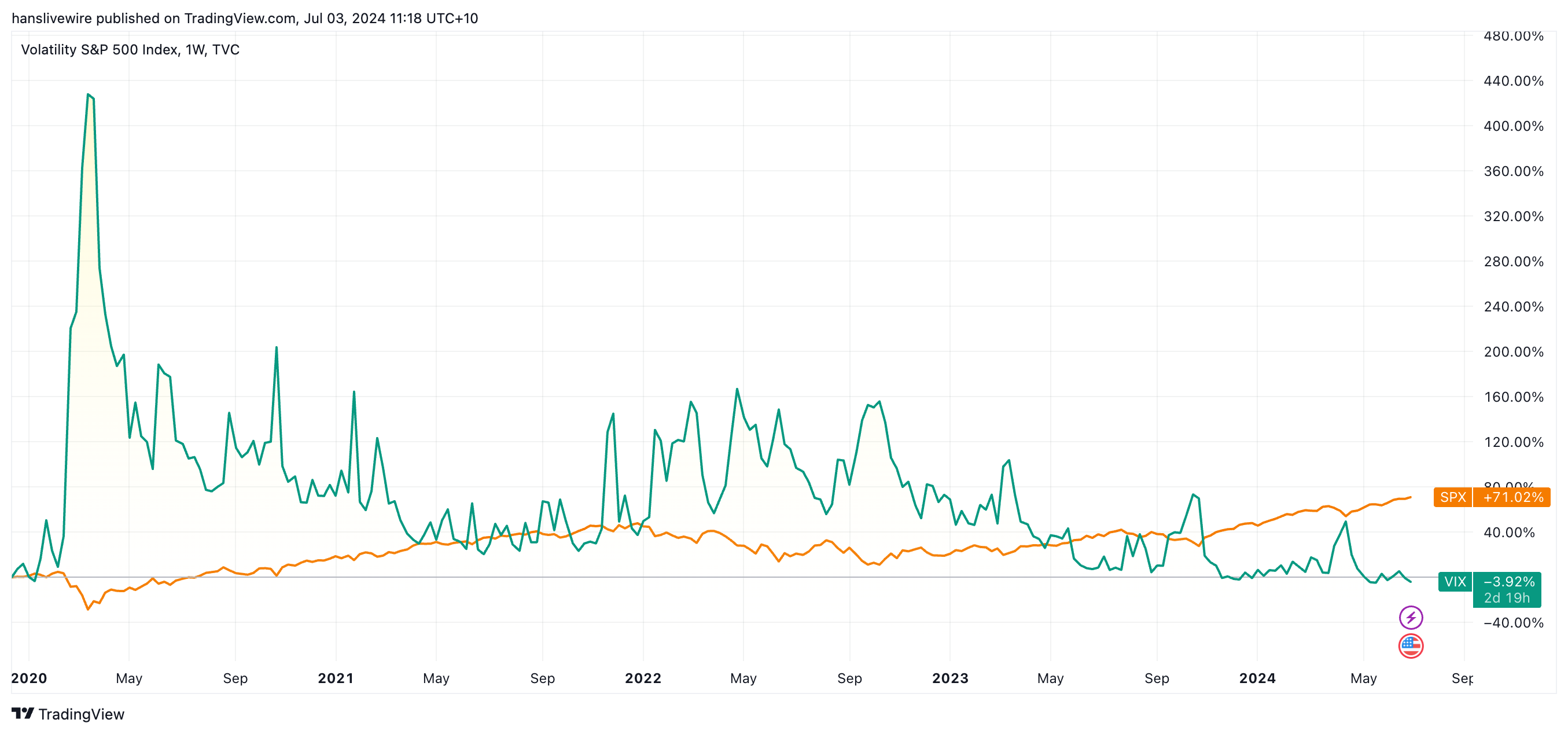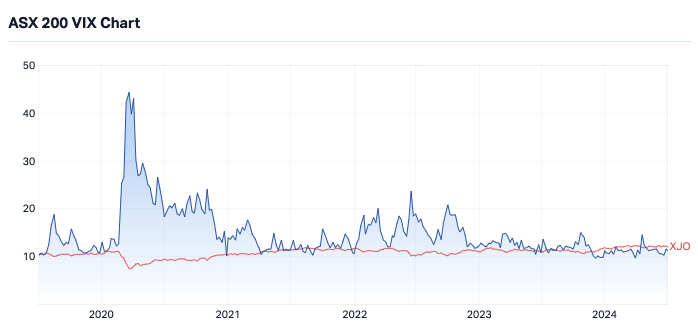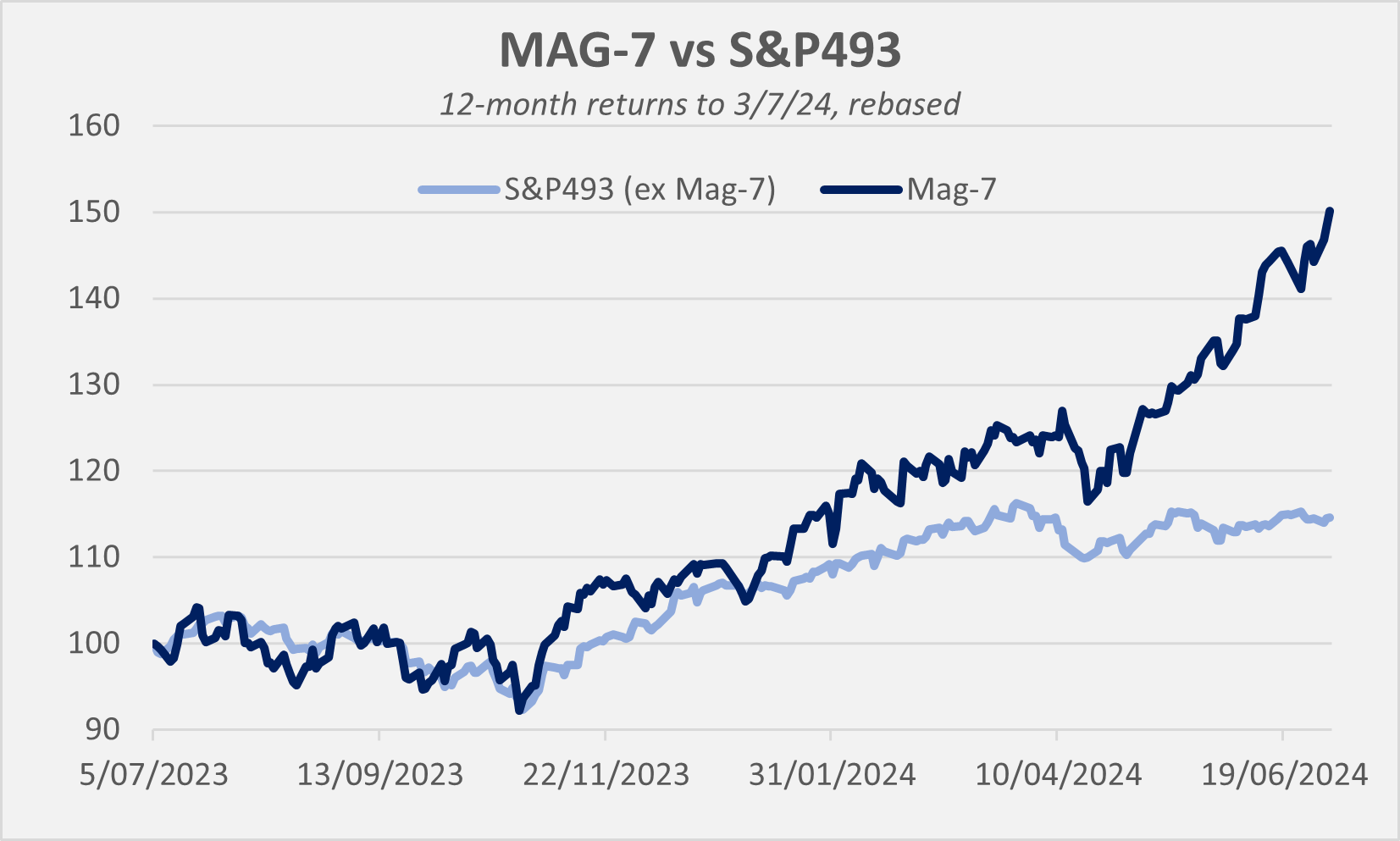Why stock market volatility is "artificially low" and what it means for you
The cost of buying protection, as measured through the real-time prices of put and call options, is sitting near multi-year lows. But unlike other instances in the past, this cost has been subdued for some time. We haven't seen a VIX Index reading above 20 since the October 2023 mini-selloff. There hasn't been a reading above 30 since October 2022.
In the past, a subdued volatility reading has been a sign that investors have become very greedy and complacent. It's also served as a signal for buying protection against big falls in the share market - after all, they don't call it the 'fear gauge' for nothing.
But as Longview Economics' Harry Colvin explained to me recently, it's not always been a reliable indicator. Periods of low volatility can also be a signal that corporate fundamentals are very strong meaning there is no reason to sell.
So which one is it this time? I spoke to Alastair MacLeod from Wheelhouse Partners recently to gauge his view.
The cost of protection
In brief, the CBOE VIX index is a real-time measure of the collective price of put and call options. Put options grant a right to sell an asset at a specific price by a specific date whereas call options grant a right to buy an asset at a specific price by a specific date. In this case, the asset is the S&P 500 but an option can be bought for any publicly-listed asset.

We also have an equivalent index in Australia, run by the ASX. The AS51 VIX Index, as it's called, is seen here in this chart against the ASX 200 itself.

So what does this all say to Alastair?
"It's suggesting that there's very low fear out there, particularly over the next month. Generally, low volatility is very good for equity markets because if markets are less fearful, typically they go up. It shouldn't be surprising then, that when you get market highs, volatility is also often at record lows, which is exactly what you're seeing at the moment in the US and, to a lesser extent, in Australia," MacLeod says.
Two notes of caution
MacLeod adds that he thinks this current bout of low volatility is not a symbol of strong fundamentals or exorbitant valuations. Rather, it may be a sign that volatility is "artificially low".
One reason is because of the bifurcated nature of today's stock market (where a few stocks go one way and the rest go another way):
"I think there are some reasons that volatility, particularly in the US, might be artificially low at the moment. Firstly, when you're talking about either the AS51 VIX [Australian volatility index] or the US VIX, it is the index level volatility and that's the volatility on the surface."
"Underneath that, 500 securities are going up and down. At the moment, in the US, you've got a two-speed market. You've got a top seven which comprise nearly 30% of the market that are the go-to stocks. And then, you've got the other 493 stocks where things are a lot tougher."

"The correlations of stocks moving in the same direction are at 15-year lows," he points out. "That's one of the reasons why index-level volatility looks very low but the volatility of individual securities has not come down by nearly as much. When something goes wrong, they will all start moving in the same direction again and that's when volatility will spike because correlations will also spike."
The other reason is a much more recent innovation - or hindrance, depending on your view - in markets: The rise of the zero days to expiry option (sometimes called a ZTE option).
"You've seen massive growth in zero days to expiry options and alongside that, big growth in short-dated option selling strategies where traders are systematically selling a lot of short-dated options. If there's been a massive growth in people selling options, then it makes sense that the price of volatility will come down as well."
What can you do about it?
If you, like Alastair, are concerned that equity markets continue to hit all-time highs in the face of a slew of macro headwinds, then there may be a case for buying protection through options.
"When volatility is artificially low, that lends itself well to buying options and buying protection. Can you buy protection a lot cheaper than what the risks are potentially suggesting? Our view is that buying protection on an equity portfolio is particularly cheap at the moment and it's something that, if you have the means and skills to do so, is an opportunity in the current environment," he says.
And given most investors can't perfectly time the market (unless you're a clairvoyant), there is a solid argument for remaining invested in equities and adding protection to portfolios.
"If volatility is particularly cheap, you can own that protection alongside owning equities. This way you receive the benefits of equity ownership, can enjoy the dividends, but you can help protect yourself against acute market selloffs," MacLeod adds.
Where can you access protection for your portfolio?
This is where your financial adviser will come in - or if you don't have one, find one who has a strong knowledge of the derivatives markets (options are a form of derivative). MacLeod was keen to emphasise that options are not a one size fits all market. But he did provide this example:
"If you're an Australian income investor, you might have a big overweight to the banks. If you were just to buy ASX 200 Index protection, and if there were to be a major financial crisis or issue where those banks could significantly underperform the market, the protection is not matched to the assets you own and you could be very disappointed based on what that protection ends up delivering," he says.
“There is also a range of ETFs that offer exposure to spikes in volatility, however sometimes what is delivered is not exactly what is on the tin. Effective protective strategies require some design and thought to the assets and the type of event being protected. Which you won’t know if it’s a good fit until you need it."
3 topics
2 contributors mentioned

